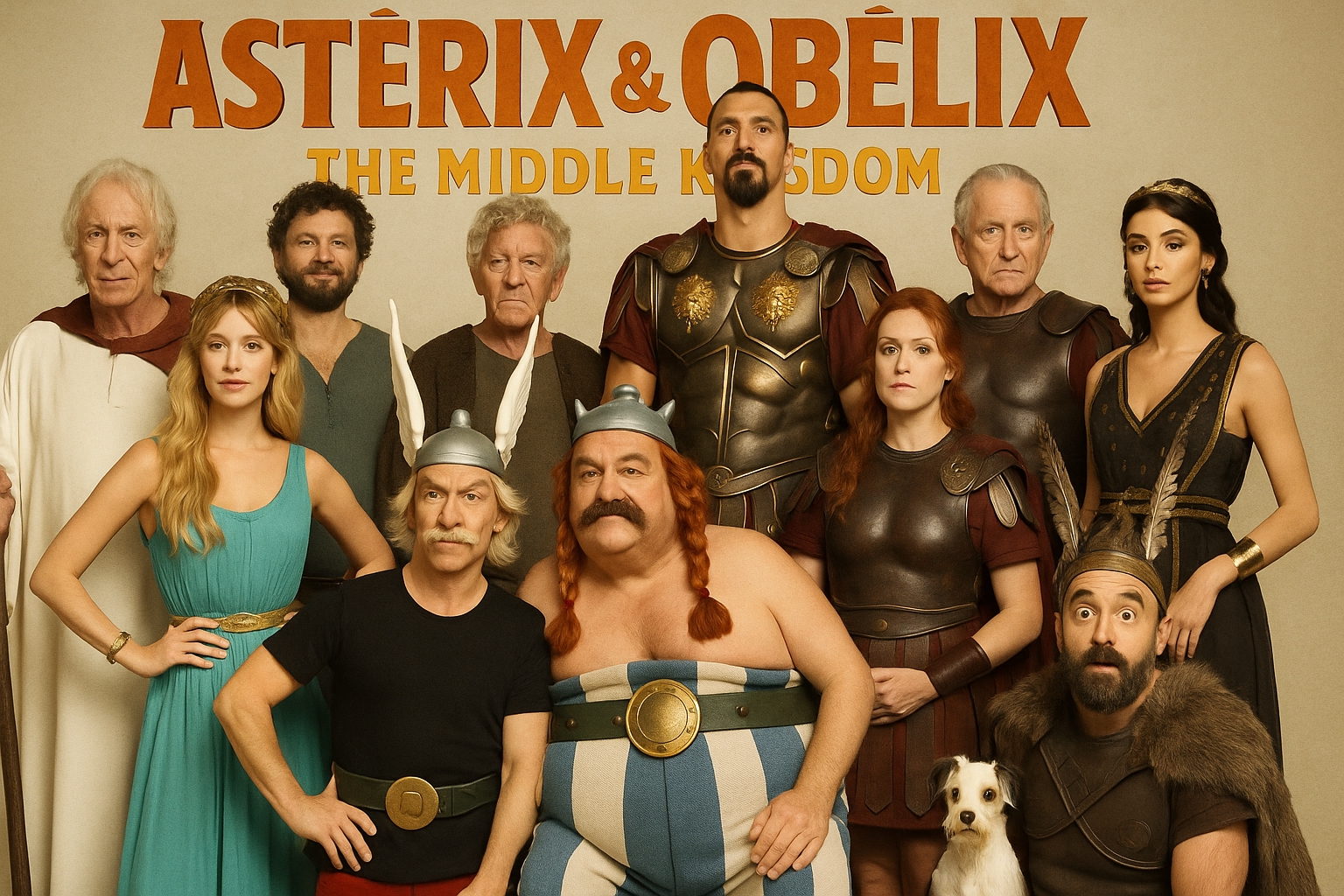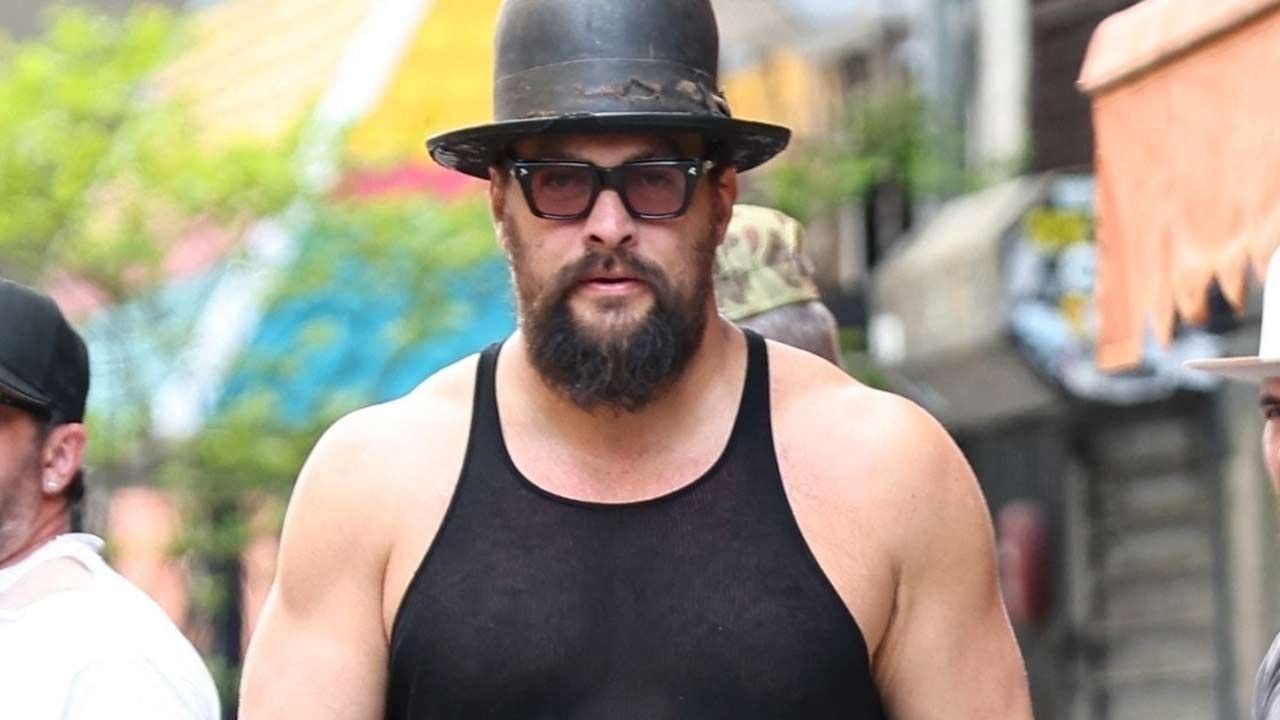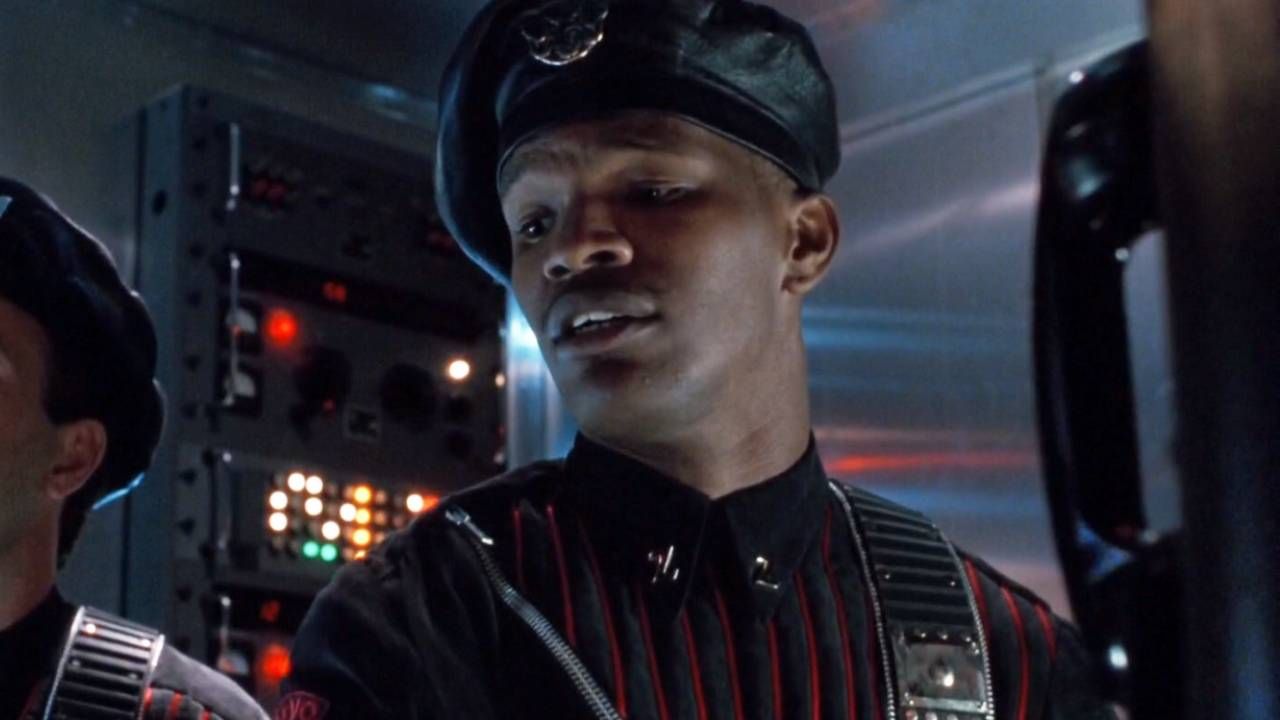Astérix & Obélix: The Middle Kingdom – Pierre Richard, Zlatan, Angèle and the Full Cast of Guillaume Canet’s Star-Powered Gallic Adventure
Guillaume Canet’s highly anticipated fifth live-action Astérix film brought a legion of French and international stars to the Middle Kingdom, creating a cinematic event that buzzed with excitement long before its 2023 premiere. From football legends to music icons and beloved screen veterans, this Gallic quest to China was one of the year’s most talked-about releases.
The road to Astérix & Obélix: The Middle Kingdom (original title: Astérix & Obélix: L’Empire du Milieu) was almost as epic as the adventures of its titular heroes. Initially announced with a star-studded cast list on April 8, 2021, the production, like many others, faced the formidable obstacle of the COVID-19 pandemic. Filming, originally slated for China, was re-strategized, eventually kicking off later in 2021 and wrapping in early August 2022. The film finally charged into French cinemas on February 1, 2023, followed by a staggered international roll-out. For those who missed its theatrical run, the adventure is now widely available on Blu-ray, DVD, and various streaming platforms, including Netflix in many territories.
A New Guard for Gaul: Canet and Lellouche Don the Helmets
Stepping into the iconic winged helmet of Astérix is none other than the film’s director, Guillaume Canet. Taking on a dual role is a Herculean task, but Canet, a celebrated actor and director in France, was determined to inject fresh energy into the beloved franchise. He inherited the directorial reins and the lead role, aiming to honor the spirit of creators René Goscinny and Albert Uderzo. “It was about rediscovering the DNA of Astérix,” Canet mentioned in promotional interviews with Pathé, emphasizing a desire to balance comedic tradition with a modern cinematic feel.
Alongside him, Gilles Lellouche, Canet’s long-time friend and collaborator, took on the considerable challenge of portraying Obélix. This marked a significant shift, as Gérard Depardieu had embodied the menhir-delivering Gaul in all four previous live-action films. Lellouche brought his own distinct charm and physicality to the role, forming a new dynamic duo at the heart of the adventure.
A Galaxy of Stars Descends on the Middle Kingdom
Perhaps the most significant buzz surrounding The Middle Kingdom was its extraordinary, almost bewilderingly star-studded cast. Canet assembled a veritable legion of French celebrities, international icons, and surprising cameos, making it a veritable who’s-who of talent.
Here’s a look at some of the marquee additions:
- Pierre Richard as Vitaℹphonectrix (Getafix in some English versions, though this is a new character): The legendary French comedic actor plays a venerable druid, reportedly Panoramix’s (Getafix’s) mentor, an original creation for the film, adding a touch of classic cinema magic.
- Zlatan Ibrahimović as Antivirus: The world-famous football striker made his acting debut as a formidable Roman legionary. The role of Caius Antivirus was tailor-made for Ibrahimović, playing on his imposing physique and on-field persona. He reportedly even improvised his own battle roar during a fight scene, much to the amusement of the crew.
- Angèle as Falbala (Panacea in English comics): The Belgian pop superstar also made her significant acting debut, taking on the role of the beautiful village maiden, previously portrayed by Laetitia Casta. For Angèle, stepping onto a film set of this magnitude was a new and exciting challenge. (Note: While Falbala is a known character, some sources indicated her playing a cousin, Bianca, but most official cast lists confirm Falbala.)
- Vincent Cassel as Julius Caesar: The acclaimed actor brought his gravitas and intensity to the role of the Roman Emperor, a character pivotal to the Astérix universe.
- Marion Cotillard as Cleopatra: Reuniting on screen with her real-life partner Guillaume Canet, the Oscar-winner portrayed the iconic Egyptian queen, offering her own take on a role previously played by Monica Bellucci.
- Jonathan Cohen as Graindemaïs (Finalthesis): A hugely popular comedic actor in France, Cohen played a crafty merchant who becomes entangled in the Gauls’ journey.
- Ramzy Bedia as Epidemaïs (Epidemais): Another stalwart of French comedy, Bedia portrayed a Phoenician merchant, adding to the film’s comedic ensemble.
- Philippe Katerine as Cacofonix (Assurancetourix): The eccentric singer and actor took on the role of the village bard, whose musical talents are infamously unappreciated.
- Manu Payet as Tat Han: A new character, a seemingly affable Chinese guide.
- Linh-Dan Pham as The Empress of China: The respected actress plays the ruler in distress.
- Julie Chen as Princess Fu Yi: The princess who travels to Gaul seeking help.
- Bun Hay Mean as Deng Tsin Qin: The main antagonist, a traitorous warlord.
This casting coup wasn’t just for show; each star brought a unique flavor, from Ibrahimović’s much-publicized on-set declaration, “I wanted to see Obélix score a goal on a Roman,” (a playful, if not verbatim, sentiment reflecting his enthusiasm) to Angèle’s fresh-faced approach to her first major film role.
Plot Snapshot: An Oriental Odyssey
The narrative, an original story not directly based on a specific comic album but inspired by the spirit of the series, sees Astérix and Obélix venturing far beyond their usual European stomping grounds. The adventure kicks off when Princess Fu Yi, the only daughter of the Chinese Empress, escapes a coup d’état orchestrated by the treacherous Prince Deng Tsin Qin. She flees to Gaul, seeking the help of the legendary indomitable warriors. Astérix and Obélix, accompanied by the ever-faithful Dogmatix (Idéfix) and the merchant Graindemaïs, embark on a perilous journey to the Middle Kingdom to rescue the Empress and restore peace, all while Julius Caesar, ever eager for conquest, also sets his sights on China.
Grand Scale and Gallic Ambition
With a reported budget hovering between €65 and €70 million, The Middle Kingdom stands as one of France’s most expensive cinematic undertakings. This significant investment is visible in the film’s expansive sets, elaborate costumes, and large-scale battle sequences. Principal photography took place in France, utilizing the Bry-sur-Marne studios for intricate set constructions, and in Morocco, whose landscapes provided a stand-in for ancient China. The production employed over 600 extras, underscoring its ambitious scope. Interestingly, an earlier Astérix project, rumoured to be Astérix in Hispania, was shelved in favour of this China-centric script, partly to appeal to a broader global audience and tap into the burgeoning Chinese film market.
Box Office and Critical Reception
In France, Astérix & Obélix: The Middle Kingdom drew approximately 4.6 million admissions (source: CBO Box-Office/CNC), a respectable figure, though perhaps not the colossal numbers some might have anticipated given the franchise’s history and the film’s budget. Critical reception was mixed. Many French critics praised the film’s visual spectacle, ambitious scale, and the commitment of its cast, particularly Canet and Lellouche in their new roles. However, some found the humour didn’t always land with the same punch as the classic comics or previous adaptations, and the sheer volume of celebrity cameos occasionally felt distracting to certain reviewers.
Internationally, reviews varied, with some appreciating it as a light-hearted family adventure, while others familiar with the source material had more nuanced critiques. Streaming performance on platforms like Netflix has seen it feature in Top 10 lists in various countries, indicating a continued global interest in the Gallic heroes.
The Legacy Continues
Astérix & Obélix: The Middle Kingdom is the fifth live-action film in the series, following Astérix & Obélix Take On Caesar (1999), Astérix & Obélix: Mission Cleopatra (2002), Astérix at the Olympic Games (2008), and Astérix & Obélix: God Save Britannia (2012). It represents the first live-action installment in over a decade. While director Guillaume Canet and Pathé have not made definitive statements about immediate sequels featuring this cast, the enduring popularity of Astérix in both print and animation (with Netflix also developing an animated series with Alain Chabat) suggests that the adventures of these beloved Gauls are far from over.
This star-studded journey to the East may have divided some opinions, but it undeniably reaffirmed Astérix and Obélix’s status as global pop culture icons, proving their magic potion still has the power to draw big names and big audiences.
Discover more from Daily Hind News
Subscribe to get the latest posts sent to your email.



